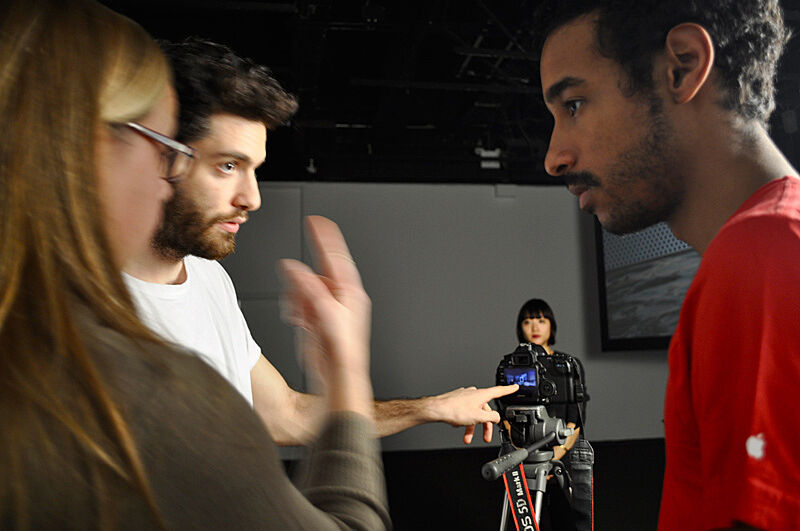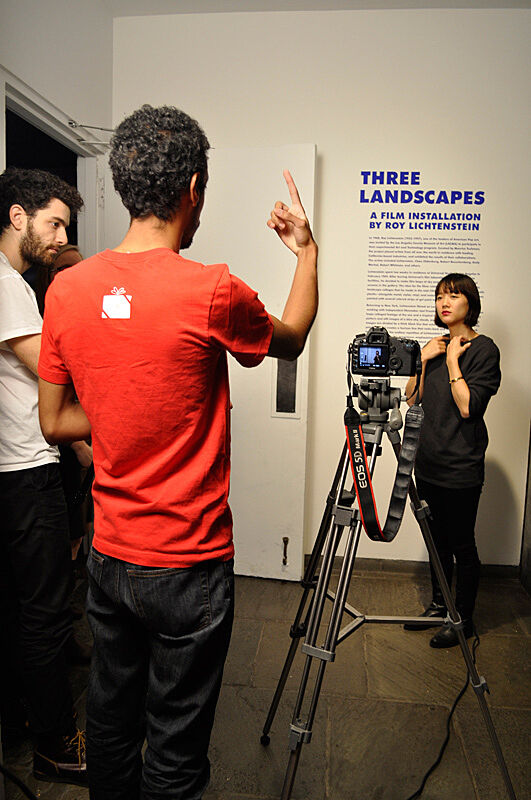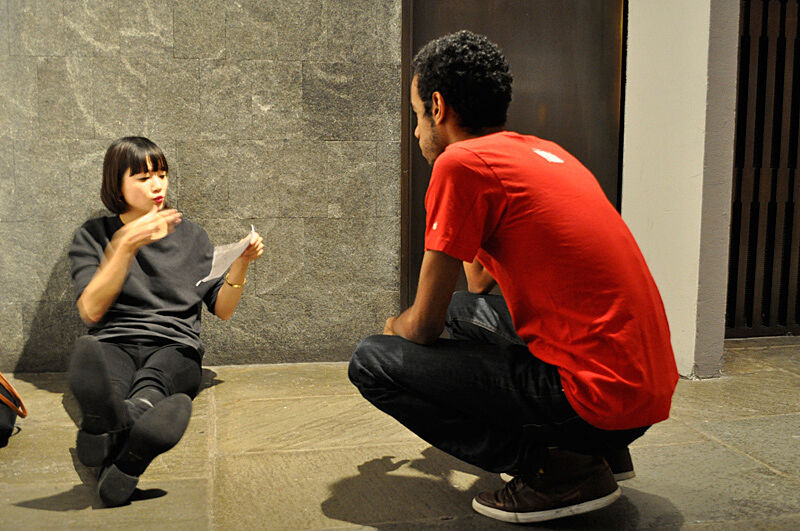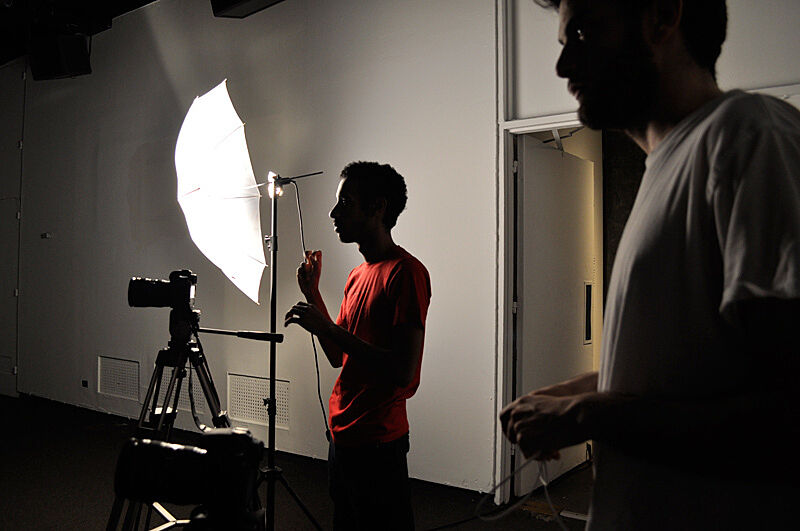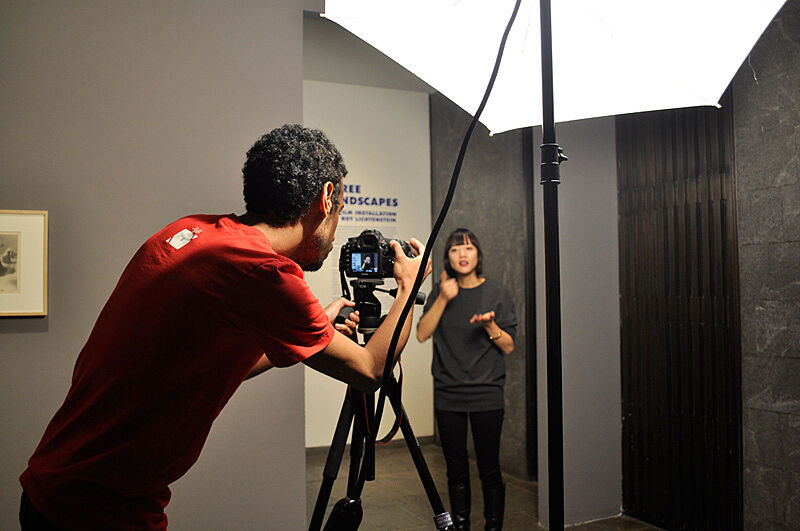Vlogging About Art: The Whitney Video Blog Project
Dec 20, 2011
A group of Whitney staff surround a camera and tripod poised in the second floor galleries. The high-energy mix of art historical facts, insight, and humor that characterizes the resulting short film is distinctly different from the didactic tone sometimes associated with museums. What is perhaps even more impressive is that the members of the team that produced it are communicating with one another in two different languages.
The video is part of The Vlog Project, a new series of video blogs produced by the Whitney. These 3– to 4-minute original videos feature museum educators who are deaf communicating in American Sign Language (ASL), focussed on subjects ranging from interviews, single works on view and exhibitions to exploring the Museum’s educational partnership with a school for the Deaf.The series aims primarily to increase opportunities for audiences who are deaf and hard of hearing to learn about twentieth– and twenty-first-century art. More than five years ago, the Museum began Whitney Signs, free monthly ASL gallery tours led by museum educators who are deaf. The program soon became overwhelmingly popular, suggesting a need for extended ASL programming.
The Whitney vlogs also enable the Museum to participate in the discussion surrounding the expansion of ASL’s vocabulary of contemporary art terms. While American Sign Language is a highly visual language, it does not have standard lexicon for describing art materials, techniques, and movements. For example, the signs for the words “modern” and “contemporary” are the same in ASL, so the educator often has to improvise, manually spelling out missing terms letter by letter.
The vlogs combine sophisticated art interpretation, professional cinematography, and creative editing, through a collaborative production process by a Whitney team of both deaf and hearing staff. “We really had to learn to work in a new way to produce this series,” the Whitney’s Manager of Access and Community Programs, Danielle Linzer, explains. “The vlogs are essentially a multilingual collaboration. Not everyone on the team speaks; not everyone signs.”
Artist Christine S. Kim; dancer, actress, and art educator Lauren Ridloff; and Andrew Fisher, an art educator and stand-up comedian—all of whom are deaf—generate all the interpretive commentary and host the videos. Videographer Pierce Jackson, who is hearing, films each segment, Deaf video editor Jeremy Lee Sanchez directs the shoot and edits the footage. An entire team of staff, including interpretive media and education specialists who are hearing, work together to create the final cut, which includes open captioning to make the films accessible to a wider audience. These multiple perspectives, coupled with the engaging hosts’ clear, and entertaining discussions of the ideas around the art—not an easy feat!—have bolstered the videos’ appeal to both deaf and hearing audiences. The vlogs have quickly become some of the most popular video content produced by the Museum.
The international award-winning project—the vlogs won a 2011 Commendation for Sustainable Growth for accessible digital culture from the Jodi Mattes Trust on December 8—is on-going; to date, ten short films have been released online so far. Stay tuned!
Watch and Listen
Watch the Vlog Project, a new series of video blogs produced by the Whitney.
Access at the Whitney
Learn more about Access services and programs at the Whitney.

